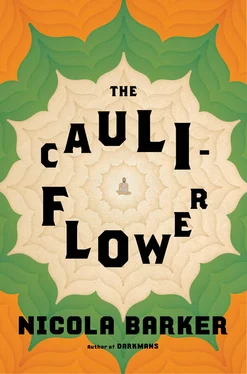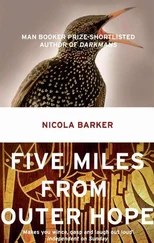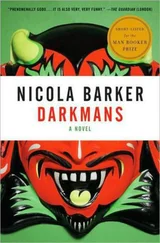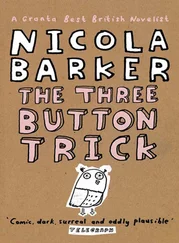Might the mischievous guru have been amused by this scene?
Back at the garden house, the urn is propped on the Master’s bed and the disciples sit around it meditating and chanting and exchanging fond reminiscences about the Master (Narendra does an excellent line in droll but intensely fond impressions of the Master emerging — startled and perplexed — from samadhi ).
After only a few days, however, Ram Chandra Datta, who is renting the house, tells them that they will have to vacate the property by the end of the month and return back to their own homes. He also informs them that he will take the ashes and inter them at his garden house in Kankurgachi Yogodyan. The disciples are upset and disappointed, and after intense discussions (did the Master not specifically ask to be interred by the Ganga?) resolve only to give Ram Chandra Datta a small amount of the ashes and keep the remainder for themselves. They ask Ram Chandra Datta to provide them with an urn, then, without him knowing, they place a tiny amount of the Master’s ash into his urn and seal the lid. The vast remainder is taken, for safekeeping, to Balaram Basu’s house, but not before, at Narendra’s instigation, the disciples all devour a small portion of the Master’s remains so that they might become, in Narendra’s words, “living shrines” to Sri Ramakrishna.
The guru ’s body — his human shell — has now, on two separate occasions, quite literally been consumed.
Poor Hridayram
He died, virtually destitute, in 1899, but without his encyclopedic wealth of biographical knowledge, the Gospel of Sri Ramakrishna could never have been written. Hridayram was the only living person to have stayed with the Master throughout his epic twelve-year-long sadhana , and as a consequence, after Ramakrishna’s death, he had every opportunity to become a significant — even a respected — figure within the nascent Ramakrishna Order. But he continued to be a difficult and a perplexing character — a maddening combination of helpful, self-pitying, resentful, and unpredictable.
Shortly after Ramakrishna’s death, the guru ’s ashes (or at least some of them) were installed, ready for worship, at Ram Chandra Datta’s garden house in Kankurgachi Yogodyan (it was a poignant interment; the disciple who would eventually become Swami Ramakrishnananda became hysterical as the spade patted the ground flat over the guru , crying, “You are hurting him! You are hurting him!”).
Ram very kindly took pity on Hridayram and offered him the job of priest there. It was an excellent position — full rent and board and a generous salary. But after a few days, Hridayram began behaving unpredictably, devouring the butter and the sweets provided for the Master himself, and offering only the remaining scraps (his own prasad , in effect) to his uncle. A shocked and exasperated Ram Chandra Datta promptly — but regretfully — sacked him and sent him on his way.
In those difficult final months, an unexpected discovery …
A devotee enters the guru ’s room, but noticing that he has his eyes closed and seems to be resting (a rare thing for the guru ), he prepares to tiptoe back out again. For some reason, however — a bedpan or spittoon that desperately needs emptying, a precariously balanced bowl of farina pudding, a buzzing fly, a fallen cloth, a dragging bedsheet — he suddenly reconsiders and makes his way quietly over toward the dozing guru . He reaches out a gentle hand and touches him, very lightly, then starts, with a gasp, barely managing to contain a violent yell. He staggers backward, blindly, his eyes rolling, his mouth slackening, as if slapped, as if Tasered by a jolt of pure, undiluted …
Wooah! What the heck was that?!
The guru opens one eye, and peeks over at the devotee with a mischievous grin:
“Ah,” he hoarsely whispers, “so you have found out my secret!”
Ecstasy. A protective shield of ecstasy. Powerful, constant, coursing waves of ecstasy are pervading the guru ’s entire body. Sri Ramakrishna is cannily, naughtily, mercilessly employing the handy device of spiritual bliss as pain relief.
Roll up! Roll up! Roll up!
For one day only! For this day only (January the 1st, 1886—the first day of the new year), your favorite guru and mine, Sri Ramakrishna, will be appearing, exclusively, in the guise of the kalpataru — the Wish-fulfilling Tree!
Roll up! Roll up! Roll up!
Don’t be late!
Don’t miss out!
Come and see!
Well, by some miracle the guru has actually crawled out of his bed. For the first time during his stay at the Cossipore garden house he is up, he is about, he is warmly dressed, and he is planning to take a small constitutional around the gardens.
It is a public holiday. There are devotees everywhere — lying under trees digesting their lunches, sitting by the water, laughing, praying, saying japa , gossiping about the guru and about each other, telling jokes, having fun, picking flowers. It’s a halcyon scene.
It should probably be observed — as we scan the local environs — that there are a few really rather important people missing. Some of the Master’s closest and most trusted disciples have gone off — led by his favorite, Narendra — on a jaunt to Bodh Gaya. These core disciples — especially Narendra — are, at this stage in their sadhana s, very influenced by the Buddhist teachings. Several of them have avowed that they do not even think they actually believe in God. Sri Ramakrishna appears to take all this in his stride. (What else can the poor guru do?) He cheerfully insists that it is perfectly natural for people to spend interludes in their spiritual lives not believing in God.
But the guru is very ill. He has so much that he still longs to impart to his boys. He will not be with them forever — mere months at best. And the disciples have gone to Bodh Gaya without even telling him. Perhaps he is a little wounded? Perhaps he is secretly smarting? Who knows? And perhaps this is why he chooses today, the first of the new year, his final year, to do what he does.
So the Master is out in the fresh air. He is walking, slowly, gently supported, around the gardens. The devotees are naturally delighted to see him (perhaps he is recovering after all! Perhaps their fervent prayers have finally been answered!), and as soon as he appears among them they swarm toward him. Girish (ever the drama queen) prostrates himself at the guru ’s feet, loudly incanting his praises. The guru instantly falls into ecstasy. The crowd becomes still more jubilant, singing, clapping, chanting his name.
The guru returns to partial consciousness and looks around him, his face glowing with love and gratitude. How might he possibly repay their loyalty and faithfulness? He raises his arms and holds out his feeble hands, his eyes filling with tears, and murmurs: “May you all be illumined!”
The crowd suddenly feels itself being enveloped — surrounded, permeated — by an incredibly warm and comforting hug of ineffable bliss.
The guru begins to move among them, barely conscious, touching them, one after the other, with his outstretched fingers. Each person responds differently to the Master’s touch because each person is different, and the guru will give them only what he thinks will send them forward on their spiritual journeys. Some begin praying; some speak imaginary languages; some start to sing; some fall to the ground, their bodies contorting; some are silent, unable to speak; some wail and weep; some sit quietly and meditate; some dance; some whirl around and scream.
Читать дальше












